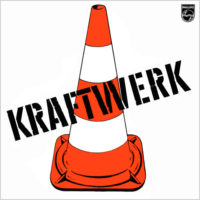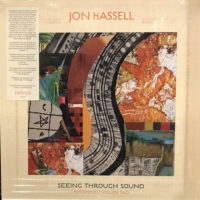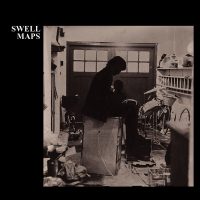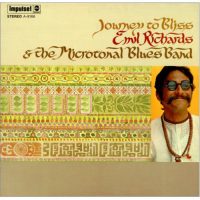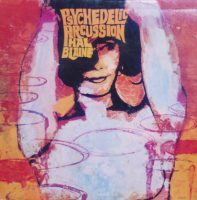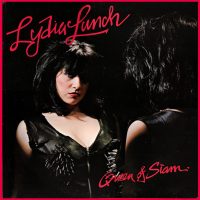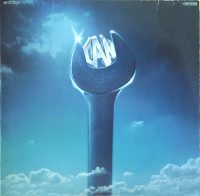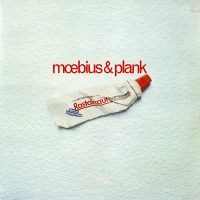
The Nurse With Wound List—which appeared in the UK avant-garde group’s 1979 debut album—opened many minds to a lot of amazing, weird music. Of the nearly 300 artists whom NWW acknowledged as influences on their music, Japan’s Karuna Khyal (and its brother band, Brast Burn) remain perhaps the most mysterious.
But you know what? The dearth of information regarding these phenomenal bands only enhances the listening experience. These bizarre aural documents—Karuna Khyal’s Alomoni 1985 and Brast Burn’s Debon—seemingly manifested magically. Their creator, one Takahashi Yoshihiro, apparently had no interest in claiming ownership or reaping whatever rewards would come from these bafflingly unique masterpieces. And that’s beautiful.
Consisting of two sidelong tracks that total 48 minutes of mind-boggling music, Alomoni 1985 sounds as if it were improvised under the influence of potent hallucinogens… in a remote cave. One may hear a slight connection to fellow Japanese psychonauts Taj-Mahal Travellers, but Karuna Khyal are a much stranger proposition. Like the Travellers, KK occasionally veer into eerie-drone territory, but more often they’re twisting rock and experimental music into unprecedented shapes.
Alomoni 1985 begins with a lurching beat and a wonderfully warped string instrument snarling a mutant blues riff, as the singer chants as if spellbound. A harmonica mirrors that fantastic riff while the heavy, burdened beat continues to trudge. An abrupt transition into a sinister chug follows, almost Chrome-like in its machine-mantra motion, but more organic than those Bay Area industrial-psych madmen ever sounded. Things get very intense and abrasive, and I can imagine a lot of listeners bowing out here.
There’s a stretch in the first track that comes off like Captain Beefheart & The Magic Band covering Can‘s “Yoo Doo Right” while being sucked into a vortex—and this is the album’s most accessible passage! The singer definitely has that gravelly Don Van Vliet timbre, but his language will be indecipherable to most Western ears. (“Kwannik kwannik kwannick TOOLAAAHHH,” eh? Can I get an “amen”?) Some studio black magic eventually turns the voice into nightmarish hall-of-mirrors murmur. It’s too much, man.
The second track starts with some of diabolically scary wind noises, insistent kick drums, and more enigmatic muttering and bellowing. What the hell is happening? I’m not sure, but the oddly angled, chunky proto-techno action foreshadows American weirdos Black Dice by about 30 years. The track gradually morphs into a disturbing marching-band/arcane-ritual procession that takes the Mothers Of Invention’s “Return Of The Son Of Monster Magnet” to the next dimension. Karuna Khyal—whoever they were—proved themselves to be operating on a whole other level of genius.
What few original copies of Alomoni 1985 exist on the second-hand market go for hundreds of dollars. Your best chance of obtaining the vinyl for a reasonable price is Phoenix Records’ unofficial 2012 reissue (which Discogs has banned). Or you could search for Paradigm Discs’ 1998 CD. Finally, if desperate to hear the album, you can stream it. But wear good headphones for optimal brain-bonking. -Buckley Mayfield
Located in Seattle’s Fremont neighborhood, Jive Time is always looking to buy your unwanted records (provided they are in good condition) or offer credit for trade. We also buy record collections.


